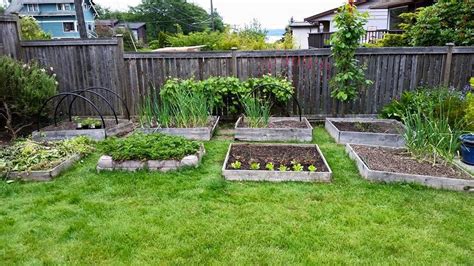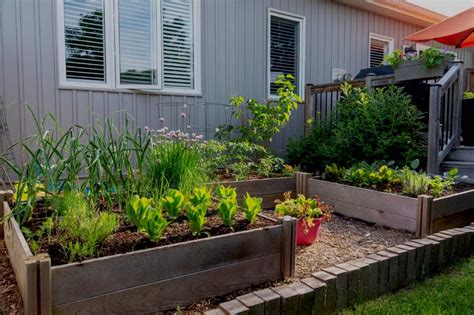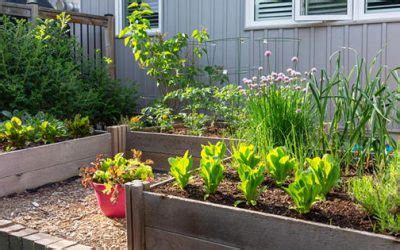Creating a thriving garden starts with a solid foundation, and raised garden beds are the perfect solution for maximizing growth while adding aesthetic appeal to your outdoor space. Whether you’re a seasoned gardener or just starting, building your own raised garden beds can offer numerous benefits, from improved soil drainage to better pest control. In this article, we’ll guide you through the process of planning, building, and maintaining raised garden beds. From choosing the right location and materials to selecting the best plants and watering solutions, we’ll provide practical tips and DIY advice to help you create a flourishing garden that’s both beautiful and productive.
Explore this topic in-depth with shzow.com
1. Choosing the Right Location for Raised Garden Beds
The location of your raised garden beds is critical to the success of your plants. To ensure they thrive, prioritize sunlight. Most vegetables and flowers require at least 6 to 8 hours of direct sunlight daily. Therefore, select a spot that receives ample light throughout the day. Avoid areas with excessive shade or locations near large trees, as their roots can compete with your garden plants for essential nutrients and water.
When selecting a spot for your raised beds, prioritize accessibility. Choose a location that’s readily reachable with gardening tools and conveniently close to a water source for irrigation. Adequate air circulation is also crucial, as it helps ward off diseases and encourages vigorous plant growth.
Proper drainage is crucial for a thriving garden. While level ground is ideal for raised beds to ensure even watering, a slight slope can also work, as long as water doesn’t accumulate in any one spot. Avoid low-lying areas prone to water pooling, as this can cause waterlogged soil and root damage. By choosing a well-drained location for your raised garden beds, you’ll create the perfect foundation for a flourishing and abundant harvest.

2. Selecting the Best Materials for Building Raised Garden Beds
The materials you choose for your raised garden beds directly impact their longevity and the health of your plants. Wood is a common choice, appreciated for its natural aesthetic and user-friendliness. Cedar and redwood stand out as excellent options, possessing inherent resistance to rot and insects, ensuring a long lifespan. While untreated pine offers a more budget-conscious alternative, it may not provide the same durability as its premium counterparts.
If you desire a long-lasting solution for your raised beds, explore options like stone, brick, or concrete blocks. These materials are highly durable and can enhance your garden’s aesthetic appeal. Metal raised beds, frequently constructed from galvanized steel, are another possibility. Galvanized steel provides both resistance to rust and longevity.
Choose materials carefully, avoiding those treated with chemicals that could seep into the soil and harm your plants. Recycled materials, such as old pallets or repurposed bricks, can be eco-friendly choices, but ensure they are safe for gardening. By making thoughtful selections, you can create raised garden beds that are both practical and visually appealing, guaranteeing a flourishing garden for years to come.

3. Essential Tools and Supplies for Building Raised Garden Beds
To efficiently build raised garden beds, having the right tools and supplies is crucial. Begin by using a tape measure to accurately measure and mark the dimensions of your bed. A saw, preferably a circular saw or a handsaw, will be needed for cutting wood or other materials to the appropriate size. For working with stone or concrete blocks, a masonry saw or a chisel and hammer will be necessary.
When building a wooden bed, a power drill is invaluable for speedily driving screws. Ensure you have a variety of screws or nails designed for outdoor use to prevent rust. For added stability, especially in larger beds, corner brackets or reinforcements should be used to secure the corners.
To ensure your raised garden bed sits on level ground, preventing uneven water distribution, you’ll need a shovel and a level. A wheelbarrow is helpful for transporting materials, especially soil and compost. To prevent weeds and pests from entering your bed, you may need landscape fabric or hardware cloth to line the bottom. With these tools and supplies, you’ll be ready to create sturdy, functional raised garden beds.

4. Step-by-Step Guide to Constructing a Raised Garden Bed
Creating a raised garden bed is a simple task that can be accomplished in a few easy steps. First, measure and mark the desired dimensions of your bed directly on the ground. The optimal width for most raised beds is between 4 and 6 feet, ensuring convenient access to the center from both sides. After determining the size, clear the area of any grass, weeds, and debris.
Next, cut your selected materials to the desired lengths. For wood, ensure the boards are cut to fit the perimeter of the bed. Assemble the frame by connecting the corners with screws or nails, using corner brackets for added stability if required. For stone or concrete blocks, stack the materials to the desired height, making sure each layer is level before proceeding.
After constructing the frame, prepare the bed’s interior by loosening the existing soil or laying down landscape fabric to deter weed growth. For deeper beds, consider incorporating a gravel or rock base for drainage. Finally, fill the bed with a blend of topsoil, compost, and additional organic matter, leaving a few inches of space at the top.
To finish, level the soil and give it a light watering. Your raised garden bed is now ready for planting. This straightforward construction process guarantees a durable and fruitful gardening area.
5. Soil Preparation and Mixture for Raised Garden Beds
The success of your raised garden bed hinges on the quality of the soil you choose. To create an optimal growing environment, fill the bed with a mixture that encourages healthy plant growth and ensures proper drainage. A widely used formula involves combining 60% topsoil, 30% compost, and 10% additional organic matter, such as peat moss or aged manure. This combination provides a balanced mix of essential nutrients, good structure, and appropriate moisture retention.
To promote healthy root growth, loosen the existing soil at the bottom of the bed before adding your planting mix. If your native soil is of poor quality or compacted, consider adding a layer of landscape fabric or cardboard beneath the soil mixture. This barrier will help prevent weeds from sprouting through your new planting bed.
As you fill the bed, periodically mix the layers to ensure even distribution of the components. Avoid packing the soil too tightly, as this can impede root growth and reduce air circulation. After filling the bed, water the soil thoroughly to help settle it and eliminate air pockets.
Lastly, test the soil’s pH and adjust it if necessary to match the needs of the plants you intend to grow. Proper soil preparation will provide a fertile foundation for your plants to thrive in your raised garden bed.
6. Watering and Irrigation Solutions for Raised Garden Beds
Keeping your raised garden bed plants healthy depends on proper watering. Because they are elevated, raised beds tend to dry out more quickly than traditional gardens, requiring consistent irrigation. To determine your watering needs, consider your climate, soil type, and the plants you’ve chosen.
Installing a drip irrigation system offers an effective solution. This method directly delivers water to the roots, minimizing evaporation and ensuring even moisture distribution. Drip systems are also customizable, allowing for the setup of timers for automated watering. This is especially beneficial during hot or dry periods.
For a more hands-on method, soaker hoses offer an efficient way to water your plants. These hoses slowly distribute water along their length, resulting in deep, consistent moisture. Place the hoses beneath mulch to reduce evaporation even further.
For smaller beds, hand watering with a hose or watering can may be sufficient. However, it is important to water deeply and infrequently. This encourages roots to grow downward rather than remaining shallow.
Applying a layer of organic mulch, like straw or wood chips, to the surface of your soil offers several benefits. Mulch helps retain moisture, suppresses weed growth, and enhances soil health. By employing these watering and irrigation techniques, you can create the ideal moisture balance in your raised garden beds, fostering robust and vibrant plants.
7. Plant Selection and Companion Planting Strategies for Raised Garden Beds
To maximize your raised garden bed’s productivity, choose plants that are suitable for your climate and the amount of sunlight your bed receives. By strategically implementing companion planting, you can further enhance your garden’s success. Leafy greens, root vegetables, and herbs often flourish in raised beds thanks to their rapid growth and compact size.
Companion planting is the practice of pairing plants that enhance each other’s growth when grown together. For instance, basil planted next to tomatoes can boost tomato flavor while repelling harmful insects. Likewise, marigolds, when placed near vegetables, are known to deter nematodes and other garden pests.
To prevent shorter plants, like lettuce and radishes, from being shaded, consider planting taller crops, such as tomatoes or beans, on the north side of your bed. Furthermore, incorporating flowers, like nasturtiums, can attract beneficial insects and enhance the visual appeal of your garden.
By carefully selecting compatible plants and employing companion planting techniques, you can create a more productive and harmonious garden envir
8. Maintenance and Care Tips for Long-Lasting Raised Garden Beds
Maintaining your raised garden beds properly ensures their longevity and continued productivity. Start by regularly inspecting the structure for any signs of wear or damage. Wooden beds may require periodic treatment with a non-toxic sealant to prevent rot and extend their lifespan. If you notice any warping or structural issues, address them promptly to avoid compromising the bed’s stability.
Keep the soil in your raised beds healthy by periodically replenishing it with compost or organic matter. This practice not only replenishes nutrients but also improves soil structure and fertility. During the growing season, remove any weeds that appear, as they can compete with your plants for nutrients and water.
Mulching around plants helps retain soil moisture, suppress weeds, and regulate soil temperature. Organic mulches such as straw, grass clippings, or shredded leaves are excellent choices.
Monitor your plants for pests and diseases, and take action as needed. Regularly watering and providing proper drainage will help prevent common issues like root rot. At the end of each growing season, clean out any plant debris and prepare the beds for the next cycle by adding fresh compost and checking for any necessary repairs. With consistent care, your raised garden beds will remain a productive and attractive part of your garden for years to come.
By carefully selecting the right location, materials, and plants for your raised garden beds, and implementing effective maintenance practices, you can create a thriving and beautiful garden space. Proper soil preparation, watering, and companion planting strategies will ensure your raised beds are productive and resilient. Regular upkeep and thoughtful care will help extend the lifespan of your garden beds and keep them flourishing year after year. With these tips, you’ll be well-equipped to enjoy a bountiful and enjoyable gardening experience.
shzow.com
